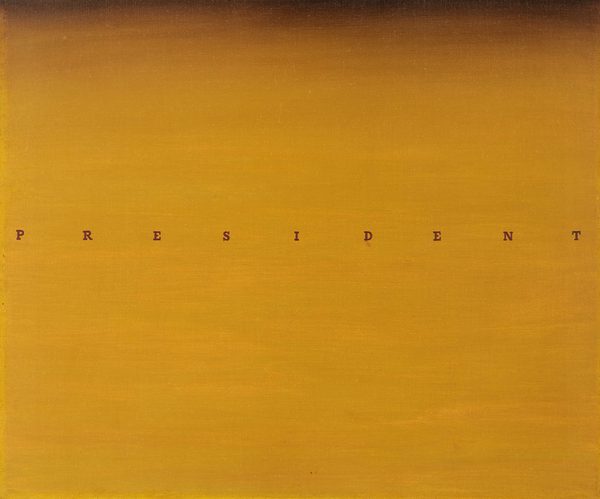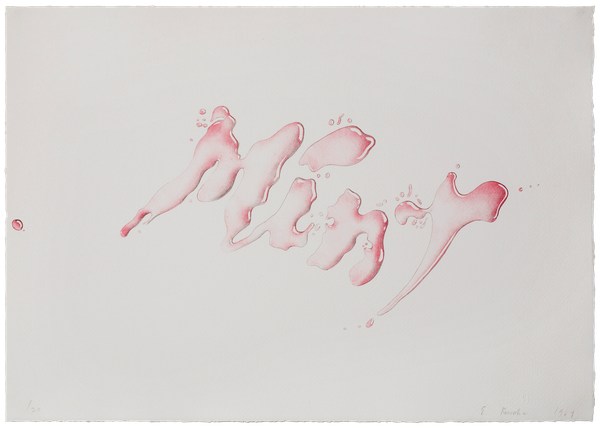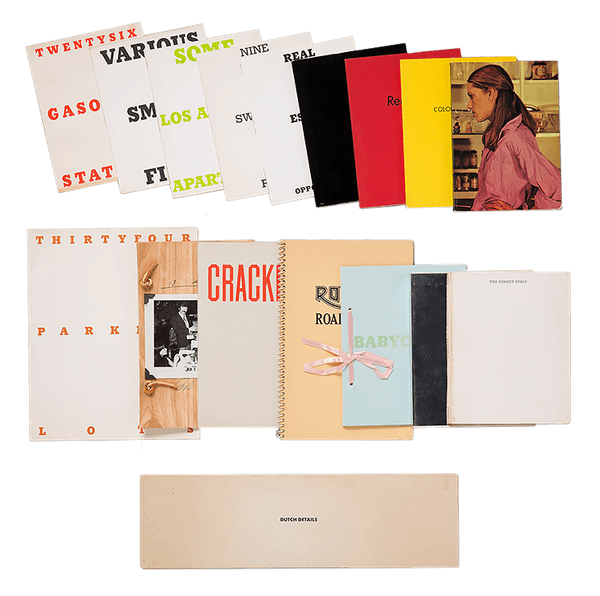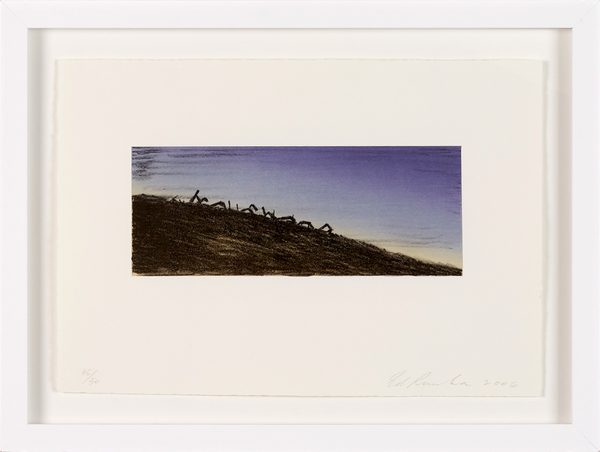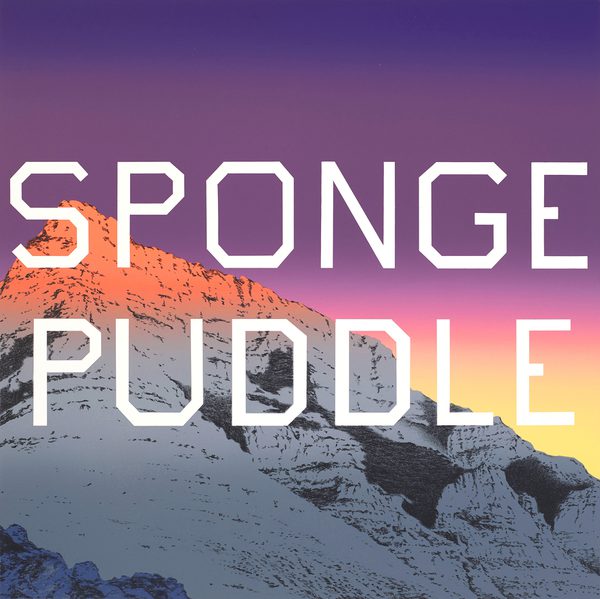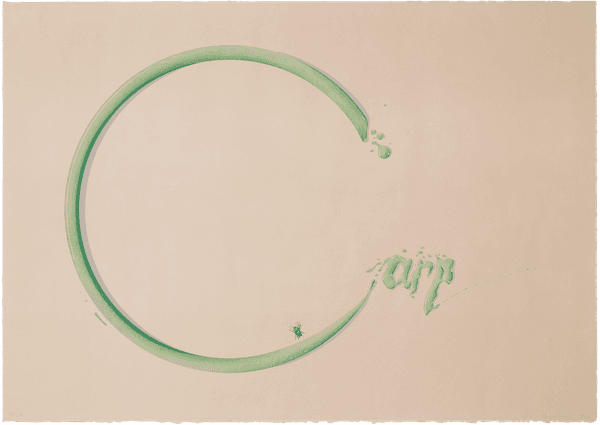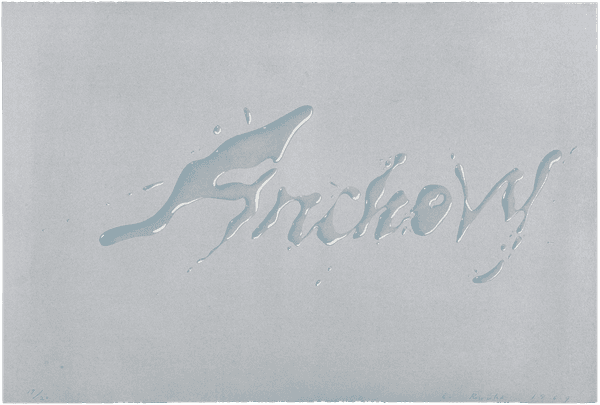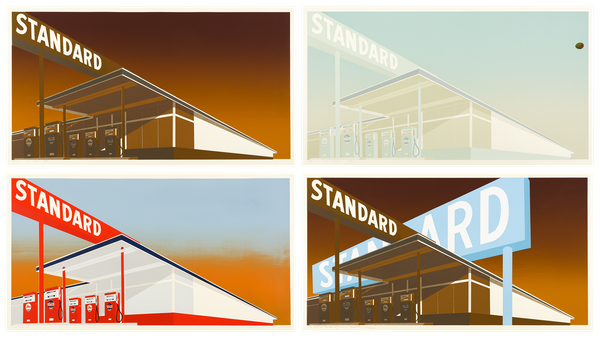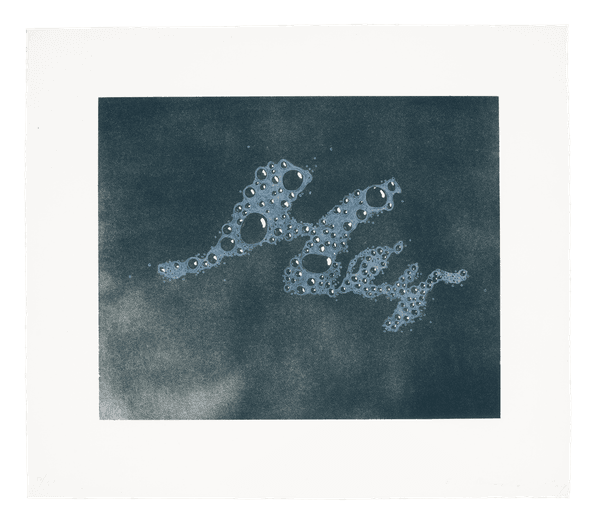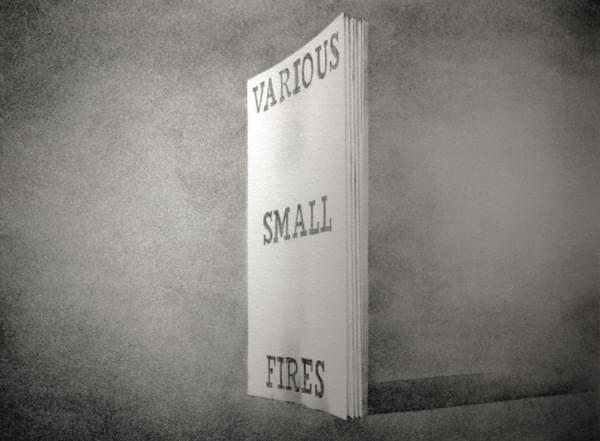President
Ed Ruscha’s career-long focus on semiotics and the power of connecting words and images to form new meaning has earned him a singular position in the pantheon of twentieth-century art. Ruscha’s President, executed from 1968-1972, is a special landmark of this journey. The background was painted in August of 1968 while the word ‘President’ was completed in August 1972; in a letter to Leo Castelli dated September 8, 1972, Ruscha wrote that he was giving the painting to a fundraiser at Pace Gallery for the 1972 McGovern campaign. The work situates within a series of around 10 works executed from 1971 to 1973 featuring single words set in small type Stymie Ex Bold, with each individual letter set further apart than in standard typography. The small font type and drastically expanded character spacing gives an illusion of levity or suspension, while also awarding each letter a charged autonomy that resists legibility, disrupting the act of reading and comprehension and presenting each character as abstract pictures as much as letters. The resulting proclamation “P R E S I D E N T” is both textual and imagistic, both demure and brazen, emanating from its neutral surrounding as a self-affirming beacon of America. Taking a highly charged word and further complicating it through his technical artistry and visual contextualization, Ruscha’s President is a paradigm of the artist’s signature marriage of text and image to convey words as physical, optically and intellectually stimulating pictorial objects.
Initially inspired by the synthesis of Pop and Conceptualism pioneered by Jasper Johns and Robert Rauschenberg, Ruscha began creating text paintings in the late 1950s. These early compositions brought together the regimented and rule-laden world of printed matter with the expressive freedom of painting. As the artist was beginning to establish his signature focus, scale and proportion became incredibly important as a basis for communication. With his early focus on single words, Ruscha’s ability to shift the formal qualities of his subject matter helped the artist create nuanced, deeply profound pockets of meaning out of monosyllabic utterances. Words in Ruscha’s paintings would become distorted as well as grow and shrink in endless permutations as the artist worked through the building blocks of communication. Critic Peter Schjeldahl has said, in relation to Ruscha’s works from this period: “Coming up on any Ruscha word picture if like hitting a rock in the road, a distinct bump... Now that I am looking, a subtle confusion sets in. A Ruscha word picture delicately frustrates the drive of reading, which is the will to comprehend a complete meaning, by presenting the word in a visual manner clamorous with seemingly complementary but actually disruptive suggestions of its own...The effect is uncanny and provocative. My surrender to the experience brings a feather-light intimation of beauty: uncanniness as pleasure, provocativeness as satisfaction” (Peter Schjeldahl in Exh. Cat., New York, Robert Miller Gallery, Edward Ruscha Stains 1971 to 1975, 1992, n.p.).
President is a powerful example of Ruscha’s appropriation of existing vernacular imagery, the given word being so charged and fraught in contemporary lexicons. Connoting power and regality, politics and contention, and attitudes ranging from respect and reverence to disdain and farce, the word ‘President’ bears multifarious potential meanings that contribute to the impact, complexity and intrigue of the artwork, getting to the crux of Ruscha’s oeuvre. The prevalence and laden nature of the word resonates with Ruscha’s understanding of it; as he stated: “Words have temperatures to me. When they reach a certain point and become hot words, then they appeal to me… Sometimes I have a dream that if a word gets too hot and too appealing, it will boil apart, and I won’t be able to read or think of it. Usually I catch them before they get too hot” (the artist cited in Exh. Cat., London, Hayward Gallery (and travelling), Ed Ruscha: Fifty Years of Painting, 2009, pp. 46-47).
By objectifying the written word into his distinguished lexicographic painting style, Ruscha became the trailblazing ‘Pop Artist of the West coast’ and all round purveyor of American cool. His canonical influence continues to inspire artists today and his cultural impact is reflected in the numerous retrospectives and major museum shows of his work.
President
- Artist
- Ed Ruscha (b. 1937)
- Title
- President
- Medium
- Oil on canvas
- Date
- 1968-72
- Size
- 20 x 24 in : 50.8 x 61.0 cm
- Inscriptions
- Signed and dated on the reverse
- Provenance
- Private Collection
Sotheby's New York, their sale, 3 May 1995, lot 355
Gagosian Gallery, New York
Collection of Ronald Perelman, New York
Private Collection - Exhibited
- Pace Gallery, New York, Art for McGovern, 20 Sept – 21 Sept 1972
Nita Mukesh Ambani Cultural Centre, Mumbai, Pop- Love, Fame, Power, 1st Dec 2023 - 11th Feb 2024, illus. pp. 94, 95 & 117 - Literature
- Robert Dean, Erin Wright, and Juan E. Gomensoro, Edward Ruscha: Catalogue Raisonné of the Paintings, 2005, cat. no. P1972.09, illus. p.42-43,
- Reference
- AC25-25
- Download PDF
- Status
- Available
Available Artists
- Albers Anni
- Ancart Harold
- Andre Carl
- Avery Milton
- Baldessari John
- Barnes Ernie
- Brice Lisa
- Calder Alexander
- Castellani Enrico
- Clough Prunella
- Crawford Brett
- Dadamaino
- de Tollenaere Saskia
- Downing Thomas
- Dyson Julian
- Elsner Slawomir
- Emin Tracey
- Freud Lucian
- Gadsby Eric
- Gander Ryan
- Guston Philip
- Haring Keith
- Hartung Hans
- Hayes David
- Held Al
- Hepworth Barbara
- Hill Anthony
- Hitchens Ivon
- Hockney David
- Hutchinson Norman Douglas
- Jenney Neil
- Katz Alex
- Kentridge William
- Knifer Julije
- Kusama Yayoi
- Le Parc Julio
- Leciejewski Edgar
- Léger Fernand
- Levine Chris
- Marchéllo
- Martin Kenneth
- Mavignier Almir da Silva
- Miller Harland
- Mitchell Joan
- Modé João
- Moore Henry
- Morellet François
- Nadelman Elie
- Nara Yoshitomo
- Nesbitt Lowell Blair
- Nicholson Ben
- O'Donoghue Hughie
- Pasmore Victor
- Perry Grayson
- Picasso Pablo
- Pickstone Sarah
- Prehistoric Objects
- Prince Richard
- Quinn Marc
- Riley Bridget
- Ruscha Ed
- Sedgley Peter
- Serra Richard
- Shrigley David
- Smith Anj
- Smith Richard
- Soto Jesús Rafael
- Soulages Pierre
- Spencer Stanley
- Taller Popular de Serigrafía
- The Connor Brothers
- Turk Gavin
- Vasarely Victor
- Vaughan Keith
- Whiteread Rachel
- Wood Jonas

